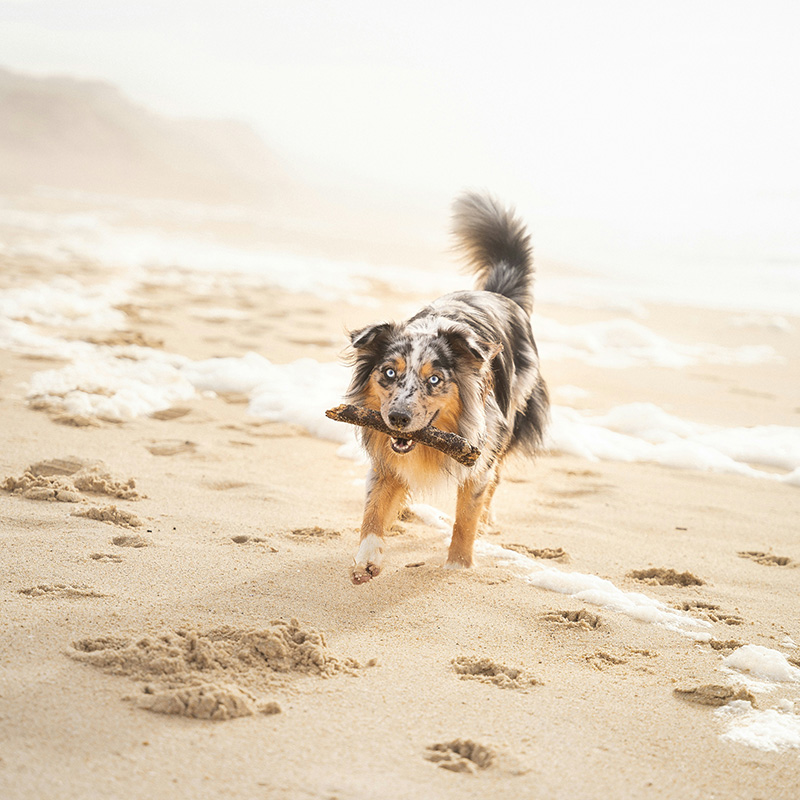Summer Pet Safety: Avoiding Heatstroke and Sunburn
 Summer can be a wonderful time for pets and their owners alike. With longer days and warmer weather, there are more opportunities to enjoy the outdoors. However, it’s important to remember that pets are particularly vulnerable to heat-related illnesses, such as heatstroke and sunburn. As a responsible pet owner, it’s vital to take precautions to keep your furry friends safe and comfortable during the hotter months.
Summer can be a wonderful time for pets and their owners alike. With longer days and warmer weather, there are more opportunities to enjoy the outdoors. However, it’s important to remember that pets are particularly vulnerable to heat-related illnesses, such as heatstroke and sunburn. As a responsible pet owner, it’s vital to take precautions to keep your furry friends safe and comfortable during the hotter months.
Understanding Heatstroke in Pets
Heatstroke occurs when a pet’s body temperature rises dangerously high, usually due to prolonged exposure to heat or strenuous exercise in hot weather. Dogs and cats don’t sweat like humans; they rely on panting and limited sweating through their paws to regulate body temperature, making them more susceptible to overheating.
Common signs of heatstroke include:
- Excessive panting or drooling
- Lethargy or weakness
- Bright red or pale gums
- Vomiting or diarrhoea
- Collapse or seizures in severe cases
If you notice any of these symptoms, seek veterinary help immediately. Heatstroke can escalate quickly and may be fatal without prompt treatment.
Preventing Heatstroke
Prevention is the best approach. Here are some essential tips to keep your pets cool:
- Never leave pets in a parked car, even for a few minutes. Temperatures can rise to deadly levels very quickly.
- Provide plenty of fresh, cool water throughout the day.
- Ensure your pet has access to shaded or well-ventilated areas when outside.
- Walk dogs during the coolest parts of the day—early morning or late evening.
- Reduce exercise on very hot days and watch for signs of overheating.
- The coat should be wet but with nothing left on the animal (e.g. a damp towel) as they need direct evaporation. Wet the coat and provide air movement (e.g. a fan)
Air movement is key for cooling. We see cases of heatstroke when the ambient temperature is not sky high but it is humid and still. That is another reason why cars are so dangerous even at moderate temperatures.
Sunburn in Pets
Like people, pets can also suffer from sunburn—particularly those with short or light-coloured coats, or areas with thin fur such as the nose, ears, and belly. Sunburn can cause painful redness, flaking, and even skin cancer in the long term.
Protecting Pets from the Sun
To minimise the risk of sunburn:
- Limit sun exposure during peak hours (11am–3pm).
- Use a pet-safe sun cream on vulnerable areas (never use human sunscreen as it may contain toxic ingredients like zinc oxide).
- Keep pets indoors or in the shade during very sunny periods.
- Provide outdoor shelter for animals that spend time in the garden.
Special Considerations
Certain pets are at greater risk in hot weather. Brachycephalic (flat-faced) breeds like Bulldogs, Pugs, and Persian cats have more difficulty breathing and are more prone to heatstroke. Older pets, overweight animals, and those with heart or respiratory issues are also more vulnerable.
If you’re unsure how to safely care for your pet during the summer, don’t hesitate to get in touch with your vet for tailored advice.
In Case of Emergency
If you suspect your pet is suffering from heatstroke or severe sunburn:
- Move them to a cool, shaded area immediately.
- Offer small amounts of cool (not cold) water to drink.
- Gently cool them with damp towels or tepid water, particularly on the belly and paws.
- Contact your vet as soon as possible.
Final Thoughts
Summertime can be a joy for you and your pet when proper care is taken. With a few simple precautions, you can ensure your pet remains happy, healthy, and safe during the warmer months.
If you have any questions or concerns, our team at Broadway is always here to help. Contact us for more tips on summer pet care or to book a check-up.
-
Previous
-
Next

